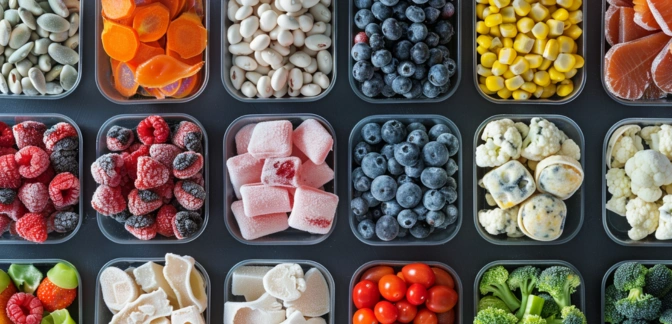Frozen Pizza — Nutrients, Health Benefits, And Shopping Tips

Written by Listonic Team
Last update on September 4, 2024
Nutrition facts
Nutrition facts
Amount per 100 g
Calories
🔥 266 kcal
| Nutrition per: 100 g | Value | % Daily Value* |
|---|---|---|
| Carbs | 33 g | 12% |
| Fiber | 3 g | 10.71% |
| Sugars | 4 g | 8% |
| Glycemic Index | 60 | - |
| Protein | 11 g | 22% |
| Sodium | 500 mg | 21.74% |
| Total Fat | 10 g | 12.82% |
*The % of Daily Value (DV) tells you how much a nutrient in a serving of food contributes to a daily diet. 2,000 calories a day is used for general nutrition advice.
11 g
🧀 Good Protein Content
4 g
🍏 Low Sugar Content
Did you know?
Health benefits
- Provides carbohydrates, protein, and fats, offering a balanced source of energy.
- Convenient and quick to prepare, making it an easy meal option.
Health risks
- High fat content particularly in pizzas with a lot of cheese, processed meats, or oily crusts, which can raise cholesterol levels and increase the risk of heart disease.
- High sodium content in many commercial frozen pizzas, which can contribute to hypertension and increased cardiovascular risks.
- High calorie content which can contribute to weight gain if consumed frequently or in large portions.
- Potential for artificial additives such as preservatives, flavorings, or colorings in some commercial pizzas, which may cause adverse reactions in sensitive individuals.
How to choose frozen pizza
The best frozen pizzas will have a well-distributed topping of cheese, sauce, and other ingredients. The crust should appear thick and not soggy. Look for pizzas with natural ingredients and minimal preservatives.
Avoid any pizzas where the toppings are sparse or the cheese looks artificial. Good frozen pizza should bake up with a crispy crust and flavorful toppings, rivaling a fresh pizzeria style.

How to store frozen pizza
Frozen pizza should be kept in the freezer until ready to bake. Store it in its original packaging to preserve its quality. Properly stored, frozen pizza can last up to six months.
Air exposure can cause freezer burn and affect the pizza's texture. Partial thawing should be avoided to maintain flavor. Keeping the packaging intact ensures it remains flavorful and crisp, providing the best eating experience.
✅ Extra Tip
How long does it last?
Frozen pizza can last for 1-2 months in the freezer when stored in an airtight container or freezer bag. To maintain its quality, ensure it is tightly wrapped to prevent freezer burn.
What to do with leftovers?
Leftover frozen pizza can be easily reheated and enjoyed as is, or repurposed into a variety of creative dishes. Reheat slices in the oven or air fryer for a crispy crust, or chop them into pieces and mix into a pizza scramble with eggs and cheese for a hearty breakfast. Pizza pieces can also be used as a topping for salads, adding a fun twist to your greens.
Use leftover pizza as a base for a pizza sandwich by folding two slices together with extra cheese and toasting in a pan until the cheese melts. If you have a lot of pizza, consider cutting it into strips and serving with marinara or ranch dip for a quick appetizer. Pizza slices can also be chopped and added to a casserole with pasta or rice, or used as a topping for nachos with additional cheese and toppings. For a unique snack, try making pizza croutons by cutting slices into cubes, toasting them until crispy, and adding them to soups or salads.
👨⚕️️ Medical disclaimer
Discover products from other categories
Listonic Team
Fact-checked
Our editorial team checked this article to make sure it was accurate at the time of publishing it.
Get the top-rated shopping list app

frozen pizza
1 piece







